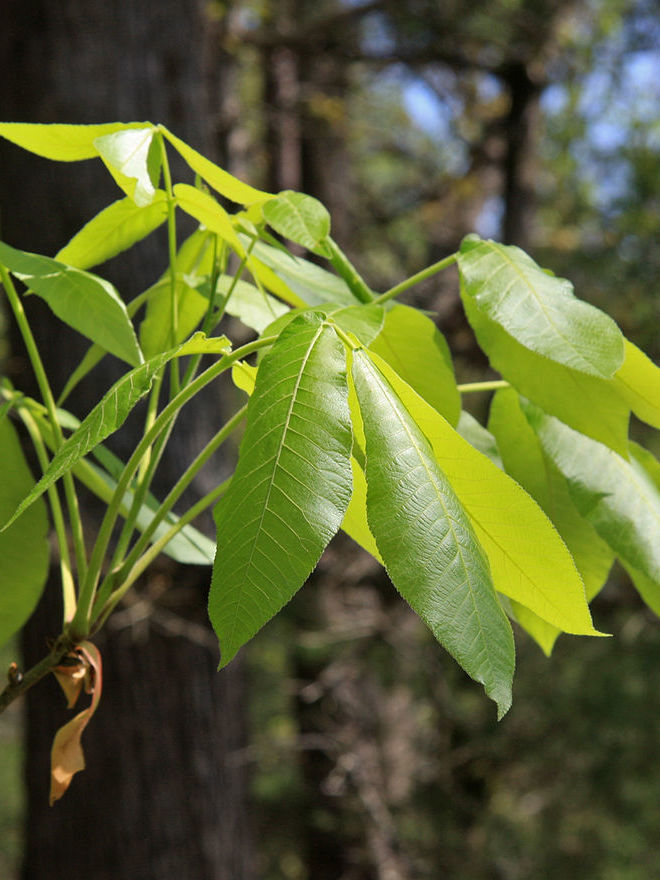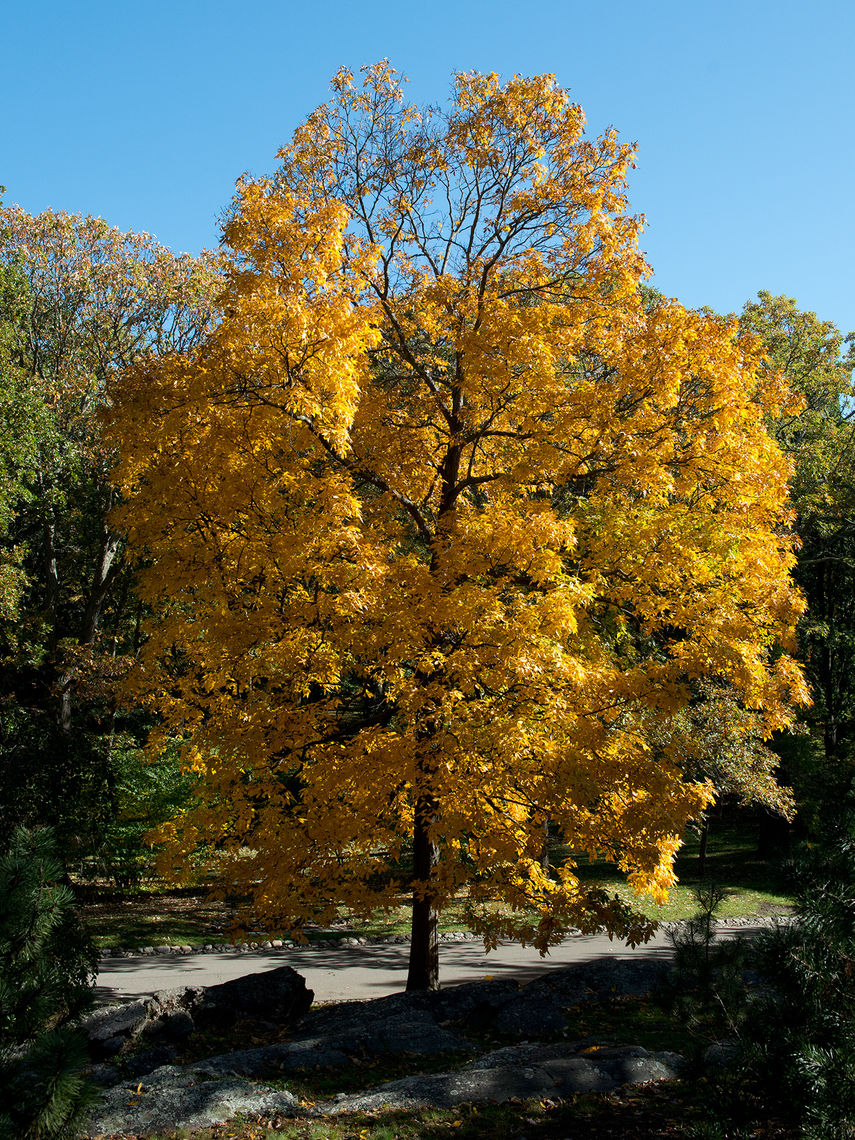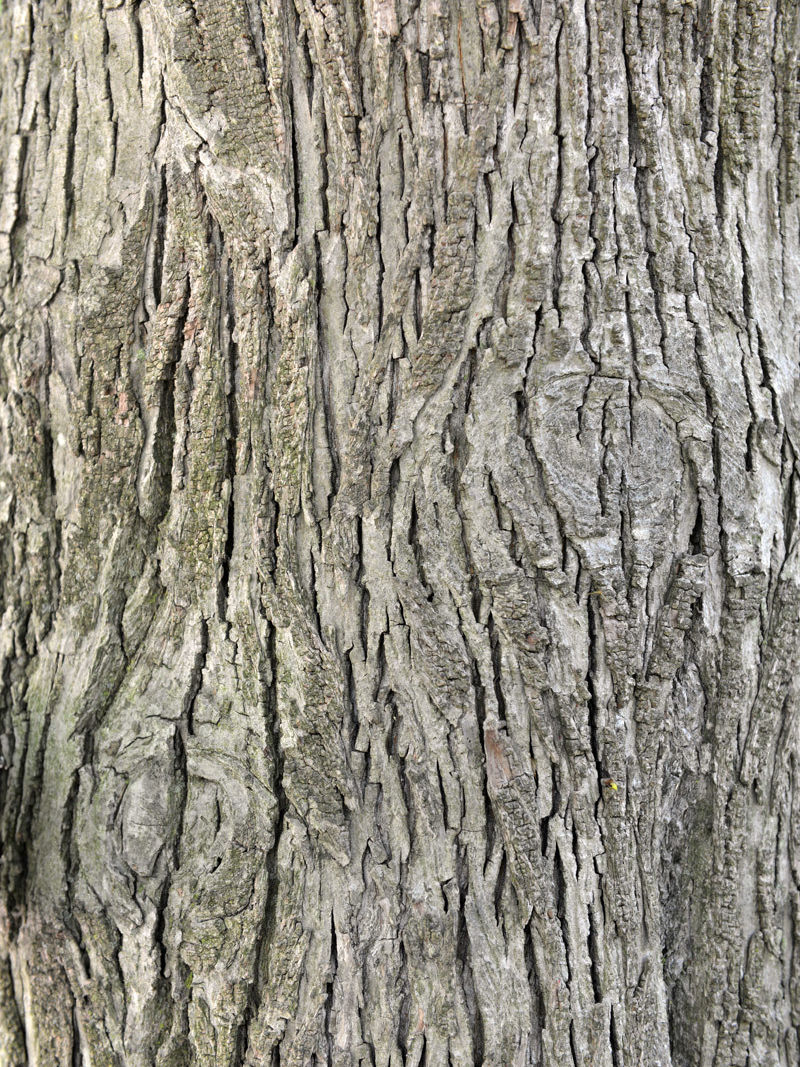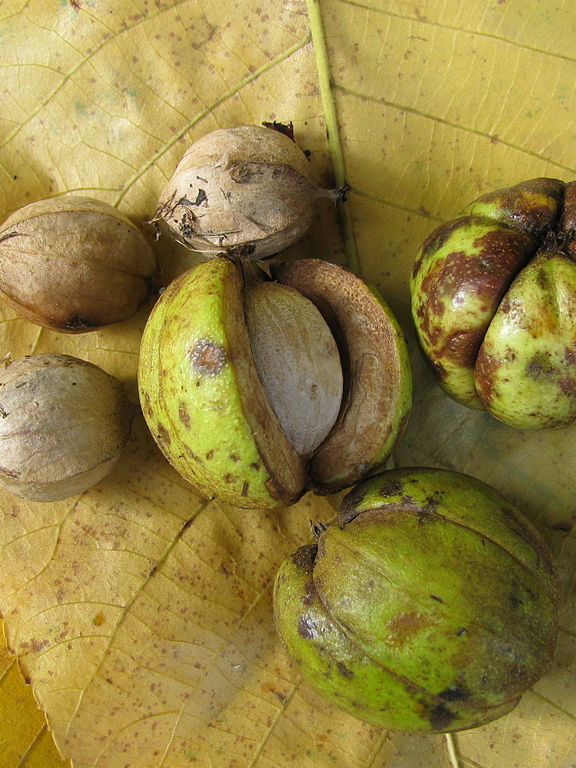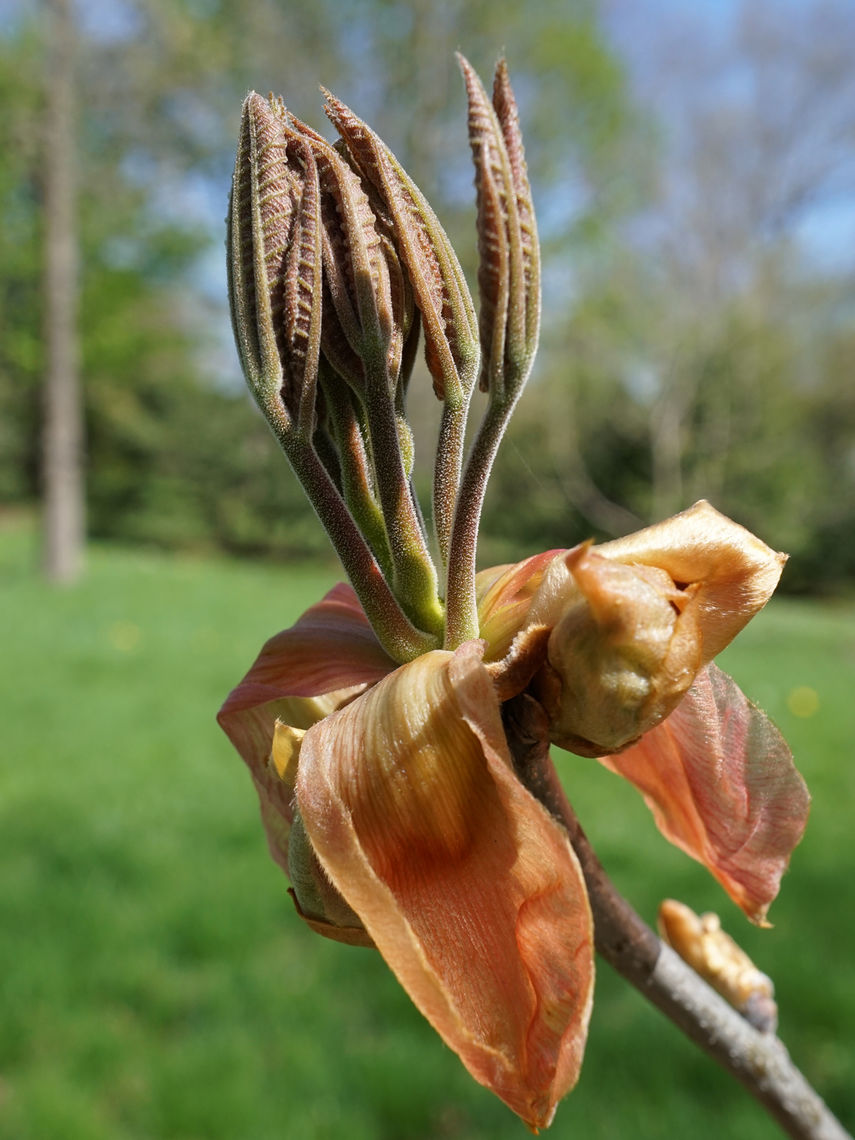Shagbark Hickory (Carya ovata)
The shagbark is known for its large shaggy strips of gray bark that peel off its trunk. This tree produces edible nuts that were an important food source to Native Americans and early settlers in the 17th century. Though less common, hickory nuts continue to be sold and eaten today. The tree's leaves are a yellow-green and consist of 5 long leaflets, arranged with two leaves on either side of the stem and one on top. Hickory wood is often used to make tools, ladders, furniture, and more, since it is very strong and hard. This tree attracts birds and small mammals.
Family: Juglandaceae (Walnut)
Characteristics:Â The green-yellow leaves consist of five 4-inch to 6-inch-long, smooth, ovate, and toothed leaflets, which are arranged in an odd-pinnate formation (leaflets attached in pairs along a stem with one on top). In the fall, leaves turn a rich yellow or golden brown. Flowers appear as drooping male catkins and short female spikes. The female flowers give way to edible nuts, which ripen in the fall, and are encased in a round outer green shell. Bark is gray and smooth when the tree is young and begins to exfoliate into large prominent strips with age. This tree has an irregular, rounded oval shape. It grows 60-80 feet high and 30-40 feet wide.
Foliage: Deciduous (leaves lost seasonally)
Geographic Origin: North America: Quebec, Minnesota, Georgia, Texas (native)
Cultivation Notes: Requires low maintenance. Does best in full sun to part-shade. Prefers moist and well drained soils. This tree needs an ample amount of room to grow. It may be difficult to transplant, due to its deep taproot.
Number on Campus: 3
Sources: Dirr, Morton Arboretum, Missouri Botanical Garden

